The RIGSS Blog
To stimulate analysis, innovation, and forward thinking, and generate new ideas and insight
on subjects that matter in 21st Century Bhutan.
A humble tribute to celebrate learning, leadership and service that His Majesty The King continues to champion.
The views and opinions expressed in the articles on the RIGSS Blog are that of the authors and do not represent the views of the institute.
GONGSA UGYEN WANGCHUCK, SERKONG DORJE CHANG AND THE PURE VISION OF ZHABDRUNG RINPOCHE
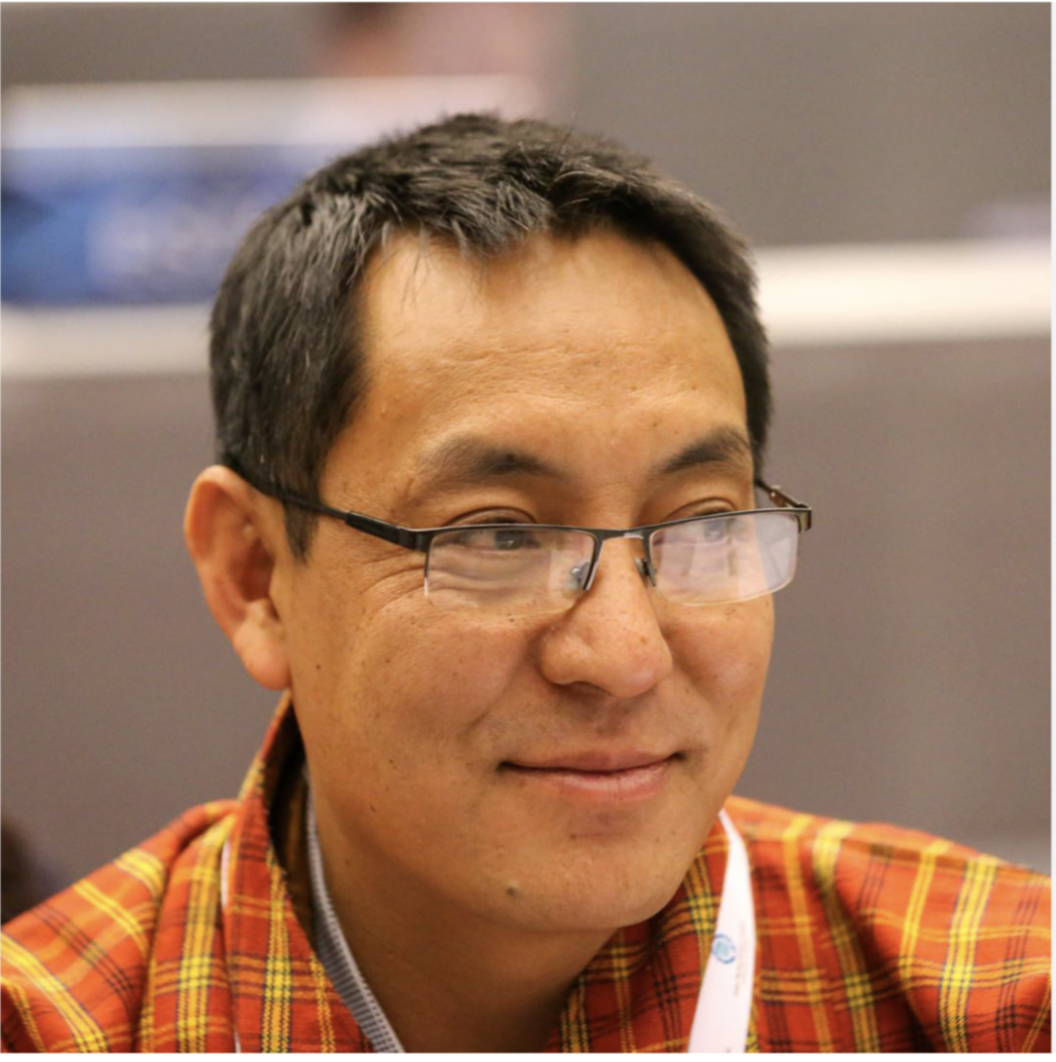
Research Fellow, RIGSS
Serkong Dorje Chang (1856-1918), whose birth name was Ngawang Tshulthrim Denden, was one of the greatest Buddhist masters of the last century. His connection to Bhutan begins with His Majesty Gongsa Ugyen Wangchuck, who took him as one of his three root gurus (The Centre for Bhutan Studies, 2008 a, p.203). The other two root gurus were Karmapa Khachab Dorje and Khamsum Yongdrel.
When Serkong Dorje Chang was young, he was once with his teacher (yongs ’dzin) at Lhasa along with another student Khangsar Trulku Lobsang Tenpi Gyeltshen. The teacher asked each of them about their spiritual activities. When he reported, it is said that a dragon thundered from the south simultaneously. This was interpreted by many assembled then as sign of someone arriving from the south who would become renowned for their spiritual undertakings. Indeed, Serkong Dorje Chang would later teach Bhutanese students such as Geshe Mindu, Paljor Ugyen and Sherub Dorje (Gaden Jangtse, 2012, p. 390), who became very well-known. Geshe Mindu, who enjoyed special relationship with Gongsa Ugyen Wangchuck, was the one to entreat His Majesty to consider another royal marriage after the demise of Ashi Rinchen Pelmo in order to continue the royal lineage. It is believed that His Majesty Jigme Wangchuck, the Second King is the reincarnation of Geshe Mindu (The Centre for Bhutan Studies, 2008 b, p. 6). Sherub Dorje also had special relationship with Gongsa Ugyen Wangchuck and would serve as the royal envoy during the renovation of the great temples of Swayambhu in Nepal (Sonam Kinga, 2019).
Serkong Dorje Chang’s biography was published by Tango Monastic Community in 1981. Another one was published in 2012 in Taiwan and a part of it has been included in the biography of the former Je Khenpo, Geshe Gedun Rinchen (Khenpo Tshering, 2017, pp. 39-42). He came to Bhutan in 1897, leaving Tibet on the Second Day of the Tenth Month of the Fire Bird Year at the age of 43 years. His visit was approved by the Thirteenth Dalai Lama, and this came at the request of Gongsa Ugyen Wangchuck, who was 35 years old and serving as the Trongsa Penlop then. Geshe Mindu recommended his master to the Penlop, who was considering to invite an accomplished lama in the context of many of Bhutan’s earlier rulers experiencing premature demises (Gaden Jangtse, 2010, p. 328). It appears that Geshe Mindu was also commanded as Gongsa Ugyen Wangchuck’s envoy to personally convey the invitation (The Centre for Bhutan Studies, 2008 a, p. 203). He was received and hosted at Phuntsho Pelri palace in Bumthang where he spent a lot of time engaging in Dharma activities.
Among these activities were the administering of month-long pith instructions on Padmasambhava’s Vajra Guru Mantra. He also composed the famous prayer for the flourishing of the teachings of Drukpa Kagyud (see Mazim Nagyal Wangchuk, 2021, fol.114-116). This prayer is recited as part of or at the end of every major prayer ceremonies or religious events including the conclusion of every parliament session.
There were many miraculous incidents associated with him both in Tibet and Bhutan. These were believed to be evidences of his spiritual realization. Some notable ones that took place in Bumthang were as follows (Gaden Jangtse, 2012, pp. 327-330). During a ritual fire-offering ceremony to subdue a malevolent and mischievous spirit-king (rgyal ’gong), he was accidentally engulfed by fire but remained unscathed. He predicted the spirit would be reborn as a Buddhist teacher in Kurtoe area which seemed to have happened later. Once he decided to undertake an extended retreat undisturbed. Many people reportedly saw the continued presence of a tigress always reclined in front of his cave which prevented access to people as well as delivery of provisions. He was inebriated once and went to relieve himself. But he fell off from the top of the palace. Everyone was deeply alarmed fearing fatality of a renowned royal guest. But he was found unharmed on the branch of a tree.
On one occasion, he was conducting the medicine sadhana (sman sgrub) at Bumthang. It is said that the people present during the ceremony saw eight doves fly in from a window and dissolved into the sacred medicinal substance which became luminescent radiating blazing lights. In his enlightened vision however, Serkong Dorje Chang instead saw the eight Medicine Buddhas appear and dissolve. Other miraculous activities he performed include closing a porcelain cup by bringing the rim together with his hands and looping a sword as well as the metallic barrel of a musket into a knot. These generated faith and devotion among people who flocked to make offerings as well receive teachings and blessings. Novice-monks also began to be sent and trained in his monastery in Central Tibet.
Serkong Dorje Chang is said to have visited Monyul region twice and even consecrated Tawang monastery. He was also engaged in saving the lives of people caught in the conflict between Mon and Tshona. It then appears that he had left for Tibet once and returned through Tshona where he conducted even some more miracles. The biography mentions that he continued to administer teachings and blessings to the rulers and people of Bhutan. In particular, again at Gongsa Ugyen Wangchuck’s request, he provided the pith instructions and meditative visualization practices of the Arya Bhadracarya Pranidhanaraja commonly known in abbreviated form as Zangched Monlam (’Phags pa bzang po spyod pa’I smon lam gyi rgyal po). This was in the Seventh Month of Water Tiger Year, around late summer of 1902. Such activities were interpreted as being in fulfilment of a prophecy foretold by the great Machig Labdron (1031-1129). She had spent time in Bhutan and a cave known as Machiphug near Taktshang in Paro is today a popular destination for pilgrimage today (Gaden Jangtse, 2012, pp. 331-334).
Serkong Dorje Chang is also said have issued religious edicts preventing the slaughter of animals. At one time, when he was giving teachings on Kalachakra, Gongsa Ugyen Wangchuck saw Serkong Dorje in his pure vision as Kalachakra. This also points to the Penlop’s level of spiritual progress. A statue of Kalachakara was also built thereafter. It is said that Vajrayana teachings flourished even more in Bhutan since then. The country enjoyed political stability and the sovereigns also lived longer.
TThe biography mentions that Serkong Dorje Chang returned to Tibet shortly but it must be before the winter of 1904, the year of the Wood Dragon. This is because he was still at Bumthang in the summer of that year. However, the year is mentioned as Water Dragon and not Wood Dragon at the end of the text of the Guru Yoga Practice of Zhabdrung Rinpoche titled The Iron Tree of Immortality (’Chi med lcags sdong ma), which he composed. This must be an error. The Water Dragon Year of the Fifteenth Rabjung (1867-1927), during which he was active was 1892-1893. But he came to Bhutan only in 1897. Again, he was administering the pith instructions of Zangched Monlam in 1902, the Year of the Tiger, as noted above. Hence, the element of the Dragon Year that came two years later, in 1904, is Wood and not Water. The Year of Water Dragon does have an important place in the life of His Majesty. It was then, at the age of 31, that he married Ashi Rinchen Pelmo, daughter of Tamzhing Choeje (Gedun Rinchen, 2020, p. 407).
Serkong Dorje Chang writes about the Pure Vision (dag snang) he had of Zhabdrung Rinpoche at Kurje in Bumthang on the Tenth Day of the Monkey (Fifth) Month that year. The Guru Yoga mentioned above is based on that vision. He specifies that the accomplishment practice (sgrub chen) of the United Intent of the Gurus, Lama Gongdü (blama dgongs ’dus), which was “composed by the supreme guide Ngawang Namgyal” was being performed at Kurje. Now we know that Lama Gongdü is a cycle of treasure teaching discovered in 1364 at Puri Pugmoche, Tibet by Terton Sangye Lingpa (1340-1398). His Holiness the Je Khenpo recently administered the oral transmission and empowerment of the 18 Volumes of these treasure texts at Autsho, Lhuntse.
In the environment of Tibeto-Mongol invasion in 1644, Zhabdrung Rinpoche received from Kongpo in Tibet, the renowned Karma Rigdzin Nyingpo who was the emanation of Terton Rigdzin Zhigpo Lingpa and also the Seventh lineage-holder of Terton Sangye Lingpa. This was following Padmasambhava’s revelation to Zhabrung Rinpoche that he must propitiate the Kagyue Gongdü deities. At Punakha, he received many teachings from Rigdzin Nyingpo including Lama Gongdü. Zhabdrung later compiled the text Gongdü Lejang Metog Threngwa (dgongs ’dus las byang me tog ’phreng ba) (Tsang Khenchen, 2022, pp. 458-459). Serkong Dorje Chang’s reference to Zhabdrung Rinpoche in that note was thus to this particular text. In 1645, both Zhabdrung Rinpoche and Rigdzin Nyingpo visited Paro and performed the drupchen of Lama Gongdü. They also visited Taktsang (Padma Tshewang, 1994, p. 163) and returned to Punakha. Rigdzin Nyingpo left for Tibet in 1646, thus spending approximately two years in Bhutan.
Serkong Dorje Chang wrote about the pure vision he had thus: “I experienced a nebulous vision in which I received some small token of blessings directly from the great omniscient Ngawang Namgyal. Not only that, I also received many nectar-like instructions directly from the master’s mouth…” (Pearcy, 2023). Based on the vision, he composed the Guru Yoga practice. Dagnang or pure visions are said to be the closest in terms of lineage and the power of blessings. A well-known Buddhist saying crystalizes this: the longer lineage is oral transmission, the closer one is the terma or treasure texts and the closest is that of the pure vision (ring brgyud bkama, nye brgyud gter ma, shin tu nye brgyud zab mo dag snang).
It is important to note that the sadhana being performed, Lama Gongdü, was one associated with Padmasambhava. The sacred site of the performance, Kurje, was where Padmasambhava first visited in the eighth century. But it was Zhabdrung Rinpoche who appeared in the vision in the midst of the sadhana and rituals instead of Padmasambhava. This is one of the many evidences that attest to Zhabdrung Rinpoche being none other than the Great Master Padmasambhava himself.
In the vision, Zhabdrung Rinpoche explained to Serkong Dorje Chang how powerful the blessings of this particular Guru Yoga are for removal of external and internal threats to the country, overcoming of various diseases that afflict humans and cattle, flourishing of monastic institutions and retreat centres and the enhancement of longevity and merit as well as prosperity. In particular, he said the practice of this Guru Yoga by the sovereign of a country would remove obstructions in life and fulfil all aspirations. The people would persevere in the practice of ten virtues and eventually attain rebirth in the lotus realm of Padmasambhava (Mazim Namgyal Wangchuk, 2021, fol. 120).
Serkong Dorje Chang compiled the text of sadhana and meditative practices based on that vision. The first teachings and empowerments were given to Gongsa Ugyen Wangchuck, royal family members and the courtiers at Domkhar palace in Chumey. Thereafter, it is said that His Majesty preserved in this Guru Yoga as his main practice. The practice includes self-visualization as Hayagriva (Yidam Tandin), one’s guru as Zhabdrung Ngawang Namgyal with Padmasambhava at his heart represented as a great scholar and Buddha Amitayu (Sangye Tshepame) as the wisdom-essence.
The following is the translation of Zhabdrung’s vision-instruction to Serkong Dorje Chang.
The essence of Guru Rinpoche’s
Best heart-advice and teaching,
To practice and accomplish longevity,
The supreme method of the practice, is thus;
Without mistaking the truth and the sequence
Visualize oneself as Tandin
Lama Ngawang Namgyal above your head
Guru Rinpoche at his heart
And Sangye Tshepame above him.
Inseparable as the heart-drop of the dakini
This Guru Yoga for blessings of long life
Is now revealed for timely practice and meditation
During the worst of degenerate times.
It will prevent wars and pacify conflicts
All diseases and epidemics will subside
Monastic schools and retreat centres will flourish
Life, merit, wealth and lineage will thrive.
For the benevolent king, who reigns according to the dharma
Life’s obstructions will be overcome and all aspirations fulfilled
Subjects will engage in ten virtuous acts
Re-birth will happen in the lotus realm.
Since it will accrue innumerable benefits
You must practice this, oh noble son!
This cycle of teaching and practice flourished in Bhutan with the empowerment, blessings and pith instructions provided by Their Holinesses, the 68th, 69th and 70th Je Khenpos. The 69th Je Khenpo Geshe Gedun Rinchen was believed to be the re-incarnation of Serkong Dorje Chang. He wrote the text of the sadhana called zab of this practice after a vision of Zhabdrung Rinpoche at Goen Tshephu in Punakha (Khenpo Tshering, 2017, pp. 109-113) where he went to perform the prayers and rituals related to the Guru Yoga of Zhabdrung Rinpoche. He also expanded the text of the Guru Yoga practice with his own writings while in meditation at Chari on a full-moon day in the summer of 1957 (Mazim Namgyal Wangchuk, 2021, fol. 121).
The Zhabdrung Dagnang Guru Yoga integrates practices associated with other Buddhist schools. Serkong Dorje Chang was a Gelug master. Zhabdrung Rinpoche is central to the teachings and practice particularly of the Lho Drukpa Kagyu tradition. Lama Gongdü is an important Nyingma cycle of teachings. His Holiness Dudjom Rinpoche Jigdrel Yeshe Dorje had also composed a Guru Yoga practice of Zhabdrung Rinpoche at the request of Dasho Phuntsho Wangdi (see Zhung Dratshang, 2016). In this practice, the three deities of longevity, Tshelha Namsum (tshe lha rnam gsum) are visualized instead of Amitayu (Tshe dpag med) alone. The other two deities are White Tara (sGrol dkar) and Ushnisha-Vijaya (rNam rgyal ma).
Serkong Dorje Chang passed away into Nirvana on the Tenth Day of the Twelfth Month of the Earth Horse Year which corresponds to 1918. In Bhutan, his students instituted the annual observance of his death anniversary in Trongsa Dzong and also commissioned the making of thangka of him. The biography mentions the anniversary as being observed on the same day (Gaden Jangtse, 2012, p. 390). However, it is now observed on the occasion of the descending day of Lord Buddha (lha ’bab dus chen). The thangka still exists and is displayed along with others on that day (Lopen Kuenga, Personal Communication, March 24, 2024).
The year, 2024, is very important from the perspective of the Zhabdrung Dagnang practice. This is also the Year of the Wood Dragon of the Seventeenth Rabjung (1987-2047). It is exactly 120 years since that vision, which occurred in the Fifteenth Rabjung. Each Rabjung constitutes a cycle of sixty years. Hence, this year marks the completion of the number of years equivalent to two Rabjungs. In Buddhist sexagenary calendar, it is like the completion of two centuries, on 16 June 2024, to be precise!
References
Gaden Jangtse. (2012). gSung ’bum dang rnam thar/ skyabs rje gser khang rdo rje ’chang gig sung). Taiwan: The Corporate Body of the Buddha Education Foundation
Gedun Rinchen. (2020). lHo ’brug chos ’byung. Thimphu: KMT Printing and Publishing
Khenpo Tshering. (2017). rJes dran zla ba’I ’zum zer. Thimphu: dge rin bu slob bkod tshogs
Mazim Namgyal Wangchuk. (Ed.). (2021). sPal ldan ’brug pa ngag dbang rnam rgyal la brten pa’i bla tse zung ’brel gyi sgrub thabs ’chi med mchog sbyin bklag mchog tu bkod pa bzhugs so
Pearcy, Adam. (Trans.). (2023). Zhabdrung Ngawang Namgyal Guru Yoga. Lotsawa House. https://www.lotsawahouse.org/tibetan-masters/serkong-ngawang-tsultrim-donden/zhabdrung-guru-yoga
Sonam Kinga. (2019). A Dharma Raja and a Mahasiddha: A Note on the Spiritual Relationship Between His Majesty King Ugyen Wangchuck and Togden Skakya Shri. Journal of Bhutan Studies. Vol. 40, pp. 1-8
Padma Tshewang. (1994). History of Bhutan. Thimphu. National Library
Tsang Khencen. (2022). dPal ldan ‘brug pa rin po che ngag dbang bstan ’dzin rnam rgyal gyi rnam par thar pa rgyas pa chos kyi sprin chen po’i dbayngs zhes bya ba bzhugs so. Rinche Yoezer (Trans.), Thimphu: Rinchen Yoezer
The Centre for Bhutan Studies. (2008 a). ’Brug brgyud ’dzin gyi rgyal mchog dang pa mi dbang orgyan dbang phyug mchog gi rtogs brjod bzhugs so
The Centre for Bhutan Studies. (2008 b). ’Brug brgyud ’dzin gyi rgyal mchog dang pa mi dbang ’jigs med dbang phyug mchog gi rtogs brjod bzhugs so
Zhung Dratshang. (2016). sKyabs mgon chos kyi rgyal po ngag dbang rnam rgyal mchog gi bla ma’i rnal ‘’byor byin rlabs myur ’bebs ma bzhugs so
WHAT MORE CAN BHUTAN DO IN MITIGATING CLIMATE CHANGE?
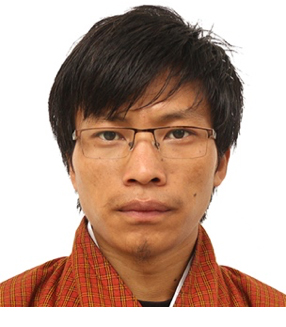
Masters Student, LSE, Former Asst. Integrity Officer, ACC
DIRECTOR’S NEW YEAR MESSAGE
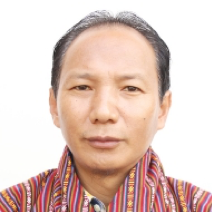
Director, RIGSS
DOING OUR PART
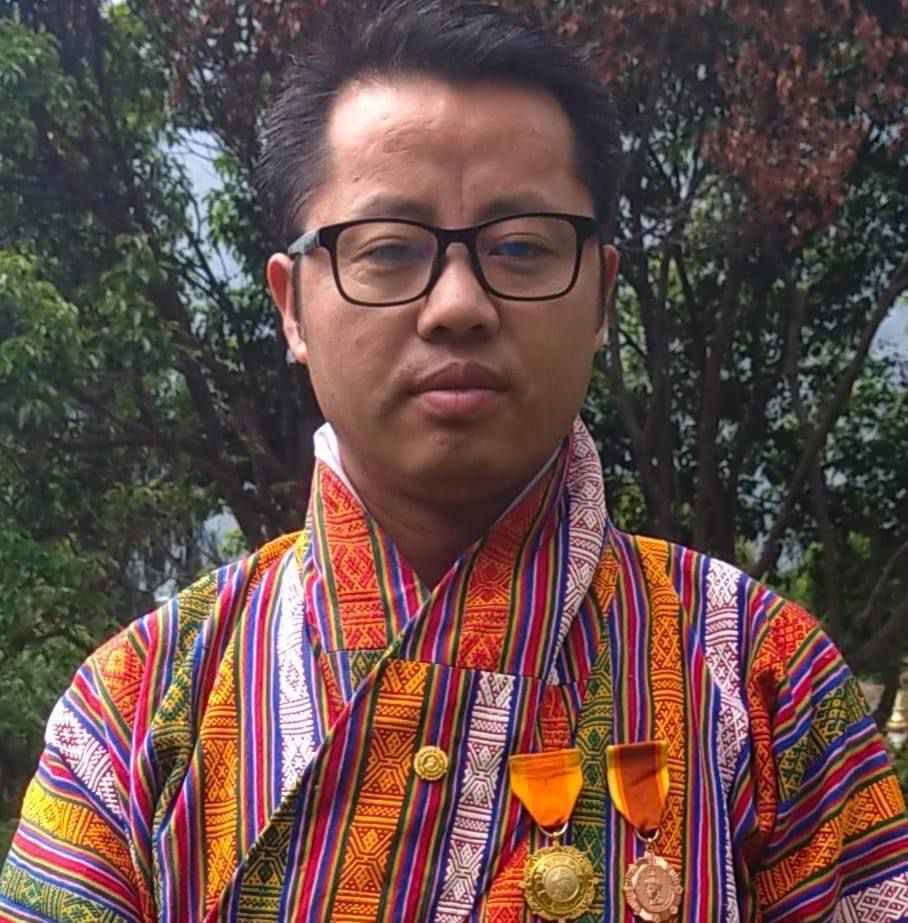
Dy. Chief Education Officer
CHINA'S RURAL REVITALISATION STRATEGY AND POSSIBLE LESSONS FOR BHUTAN
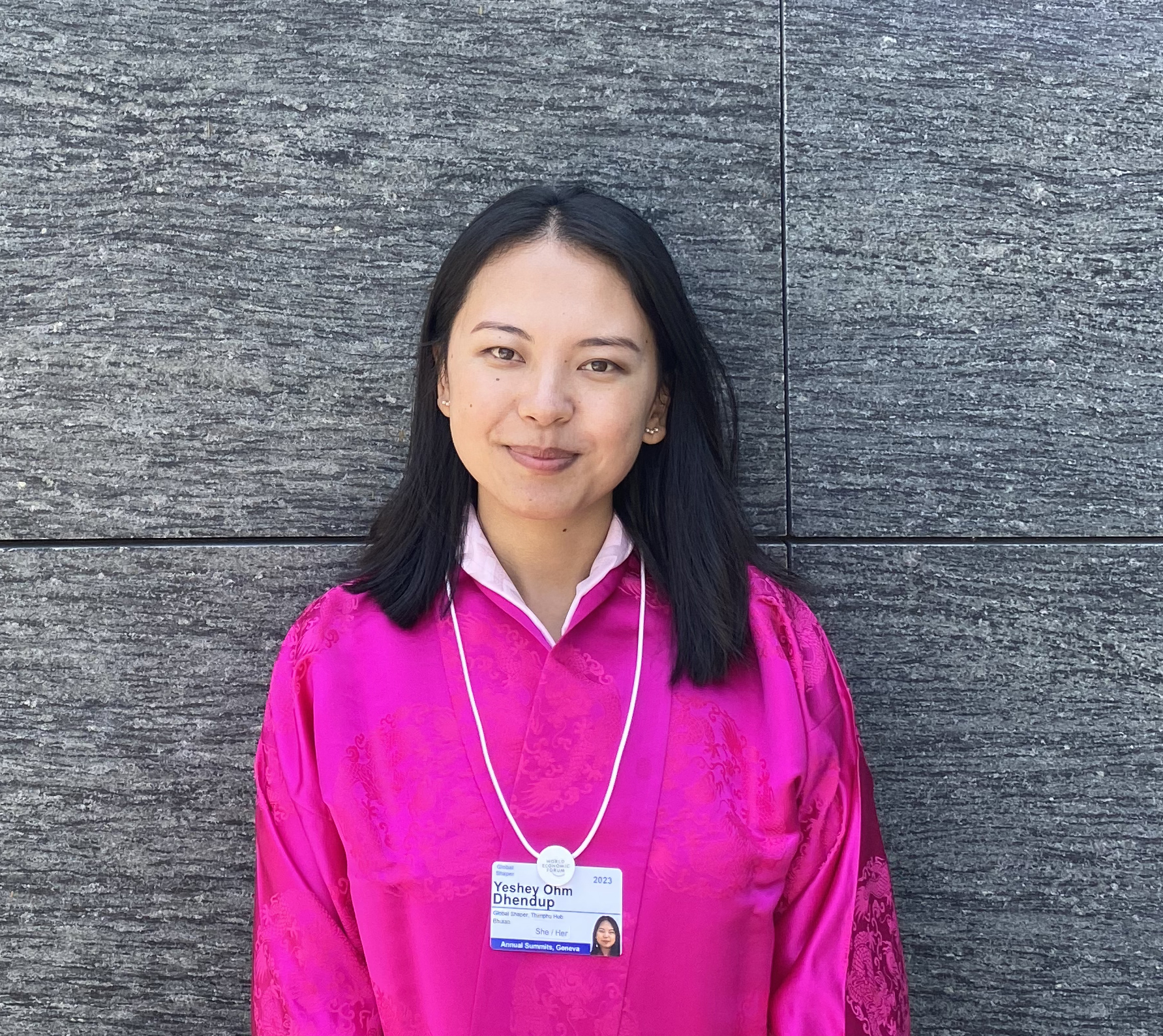
Research Officer, RIGSS
AGRI-PRENEURSHIP IN BHUTAN
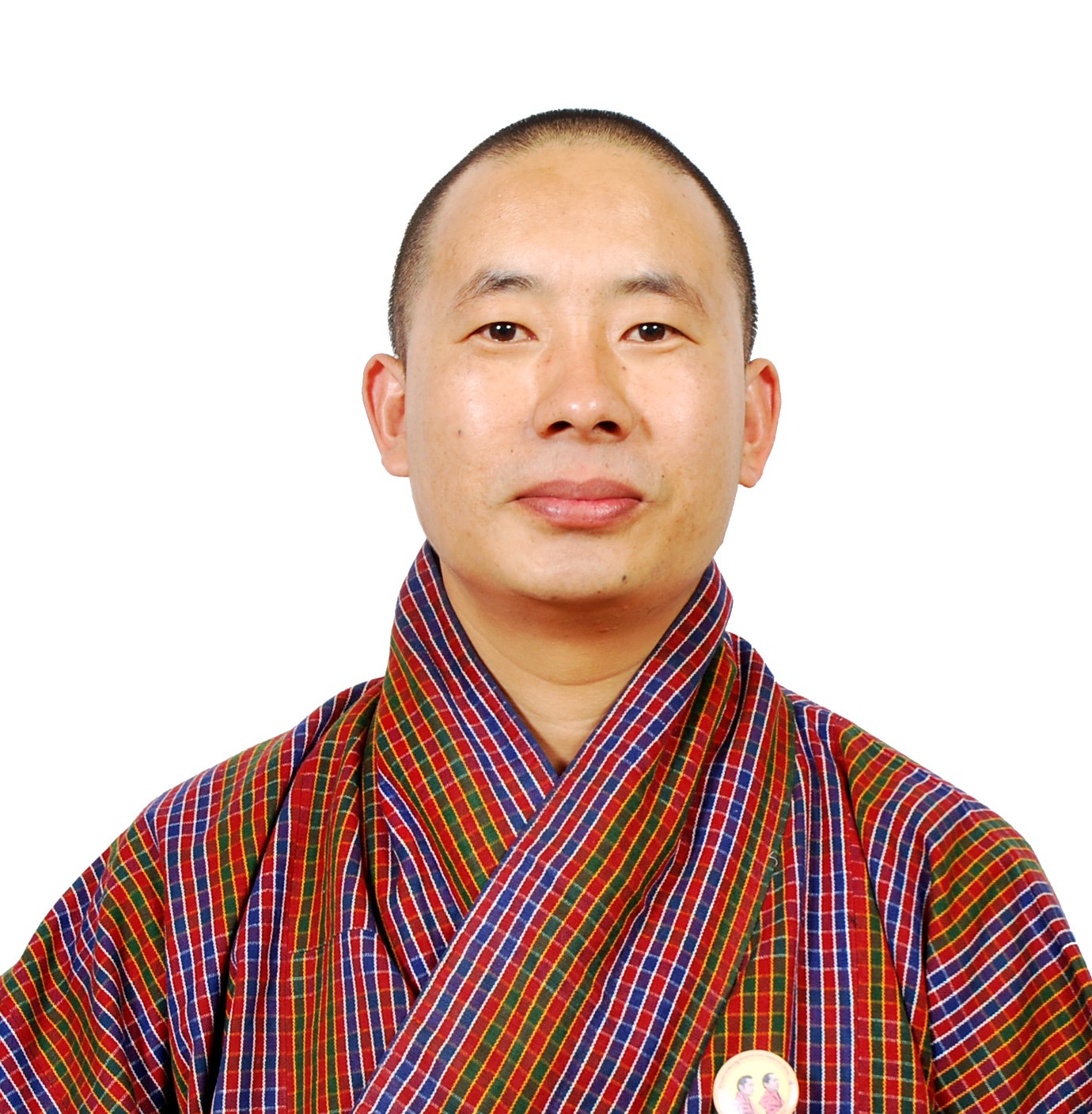
RIGSS Alumnus, SELP-5
DEMOCRACY IN THE AGE OF AI

Research Officer, RIGSS
